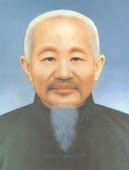Guan Yin (in Chinese: 觀音, pinyin guānyīn)full name: 觀世音 Guan Shi Yin
in Thai: กวนอิม)
| |
NAME The name Guan Yim also spelt Guan Yin, Kuan Yim, Kwan Im, (meaning "Observing the Sounds (or Cries) of the (human) World".) Highly respected in Asian cultures, Guan Yim bears different names as follows: Hong Kong: Kwun Yum Japan: Kannon or more formally Kanzeon; the spelling Kwannon, (based on a pre-modern pronunciation, is sometimes seen) Korea: Gwan-eum or Gwanse-eum Thailand: Kuan Eim (กวนอิม) or Prah Mae Kuan Eim Vietnam: Quan Âm In Chinese Buddhism, Guan Yim/ Guan Yin/Kuan Yim/ Kuan Yin is synonymous with the Bodhisattva Avalokitesvara, the pinnacle of mercy, compassion, kindness and love. (Bodhisattva- being of bodhi or enlightenment, one who has earned to leave the world of suffering and is destined to become a buddha,but has forgone the bliss of nirvana with a vow to save all children of god. Avalojkitesvara: The word ‘avalokita’ means "seeing or gazing down" and ‘Êvara’ means "lord" in Sanskrit). Among the Chinese, Avalokitesvara is almost exclusively called Guan Shi Yin Pu Sa. The Chinese translation of many Buddhist sutras has in fact replaced the Chinese transliteration of Avalokitesvara with Guan Shi Yin. Some Taoist scriptures give her the title of Guan Yin Da Shi, and sometimes informally as Guan Yin Fo Zu. ORIGIN Along with Buddhism, Guan Yim's veneration was introduced into China as early as the 1st century AD, and reached Japan by way of Korea soon after Buddhism was first introduced into the country from the mid-7th century. Representations of the bodhisattva in China prior to the Song Dynasty (960-1279 AD, Northern - and Southern Song Dynasty) were masculine in appearance. It is generally accepted that Guan Yim originated as the Sanskrit Avalokitesvara, which is her male form, since all representations of Bodhisattva were masculine. Later images might show female and male attributes, since a Bodhisattva, in accordance with the Lotus Sutra, has the magical power to transform the body in any form required to relieve suffering, so that Guan Yim is neither woman nor man. In Mahayana Buddhism, to which Chinese Buddhism belongs, gender is no obstacle to Enlightenment. As the Lotus Sutra relates, the bodhisattva Kuan Shih Yin, "by resort to a variety of shapes, travels in the world,
conveying the beings to salvation."
The representation in China was further interpreted in an all-female form around the 12th century, during the Ming Dynasty (1368- 1644 AD). The twelfth-century legend of the Buddhist saint Miao Shan (see below), the Chinese princess who lived in about 700 B.C., is widely believed to have been Kuan Yin, reinforced the image of the bodhisattva as a female. In the modern period, Guan Yim is most often represented as a beautiful, white-robed woman, a depiction which derives from the earlier Pandaravasini form. |

all about Buddha
About Me
- Su Ven
- i'm a buddhist (TAO). from HE MING FOTHANG and i'm vegetarian. love to share about TAO with u all. may all of you be protection from LAO MU and SIEN FO......
Kwan Im
World Savior With Love!
reincarnation of Buddha

You can replace this text by going to "Layout" and then "Page Elements" section. Edit " About "
reincarnation of Buddha 2

About
Blogger templates
Blogroll
Pages
Savior with Love. Powered by Blogger.
Pages - Menu
Popular Posts
-
Guan Yin (in Chinese: 觀音, pinyin guānyīn) full name: 觀世音 Guan Shi Yin in Thai: กวนอิม) Chinese Bodhisattva/ Goddess of Compassion,...
-
Hai everybody.....do you miss me.....hahahahahah . Long time no see guys.........sorry because i’ve lots work to do..... Now a i ...
-
Begitu banyak manusia di dunia ini. meskipun kita pernah bertemu seseorang yang wajahnya sama dengan kita,yang pasti watak pasti berbeda. pe...
-
Add caption Ghiboo.com - Tak ada salahnya kini Anda mulai menjadi vegetarian. Penelitian terbaru yang dipublikasikan dala...
-
sekarang saya ingin mengulas tentang bagaimana kesempatan kita untuk bertobat di dunia yang banyak sekali bencana. Seberapa Besar Dosa Kit...
-
VIVAnews - Teori fisikawan terkemuka, Stephen Hawking, bahwa Tuhan tidak ada sangkut pautnya dengan penciptaan alam semesta telah mengunda...
-
Hai guys..............saatnya meningkatkan rohani ok? Siip deh..........banyak kerjaan boleh tapi jangan lupa sama Tuhan ya...... edis...
Blog Archive
Followers
Subscribe to:
Comments (Atom)







